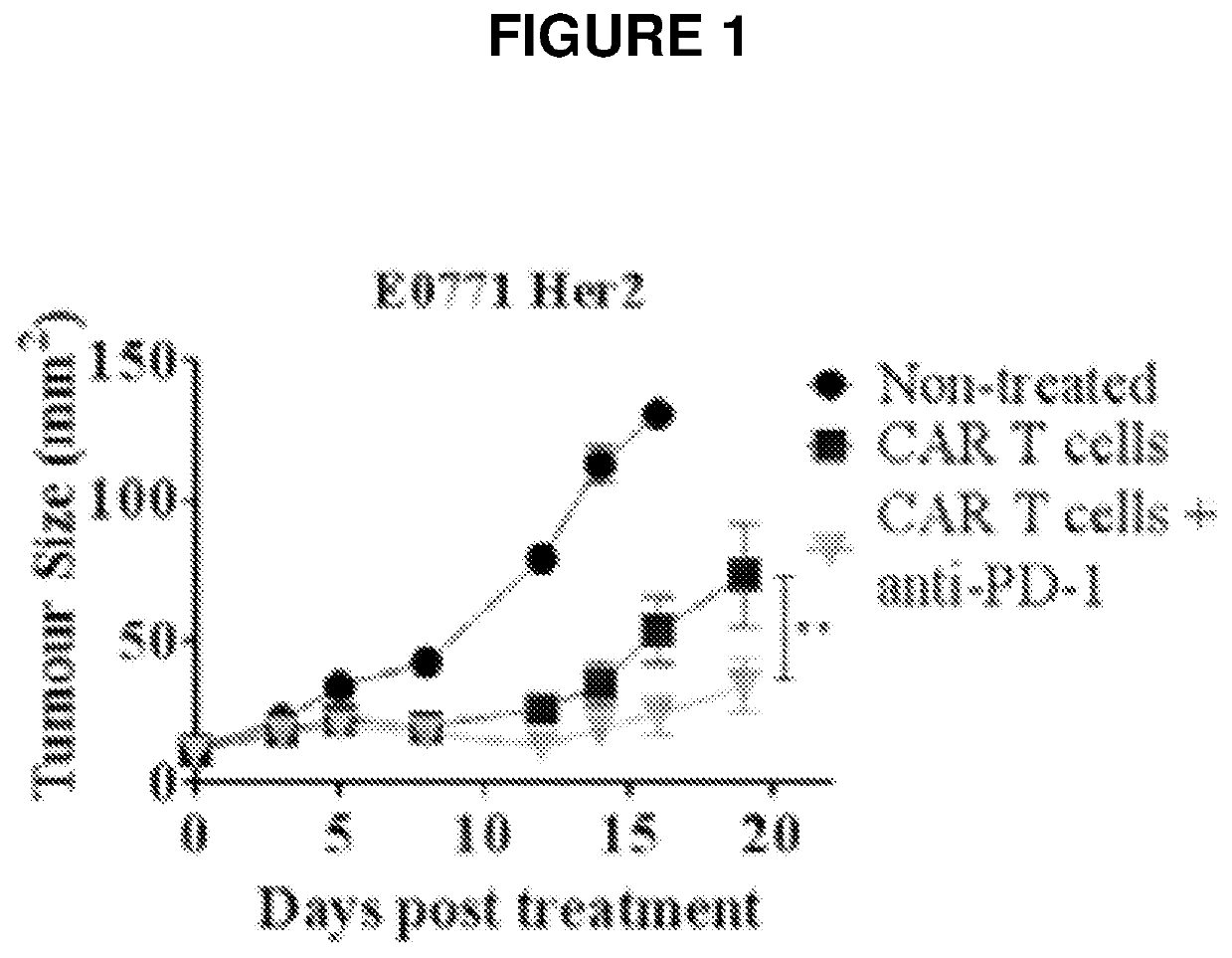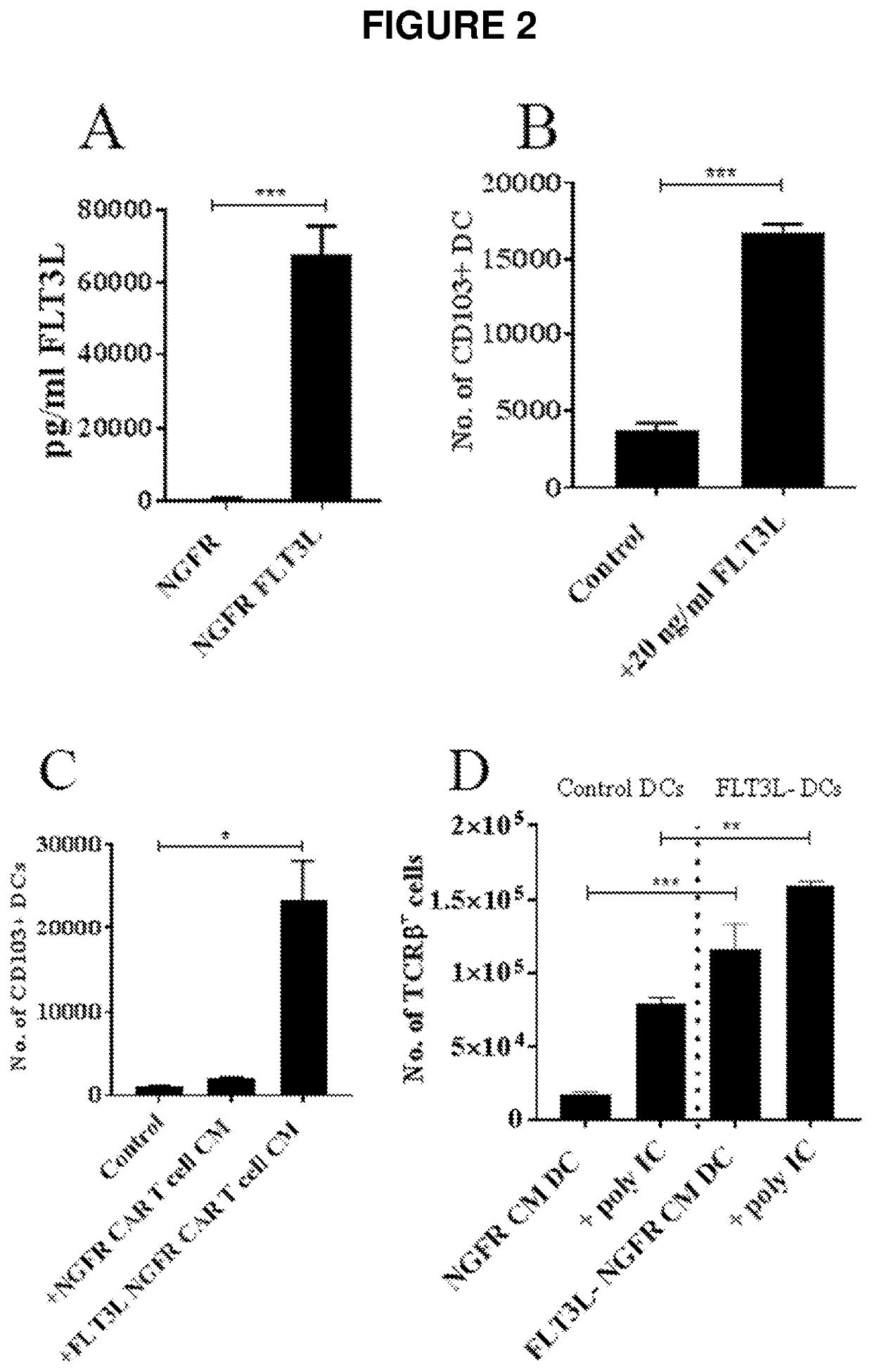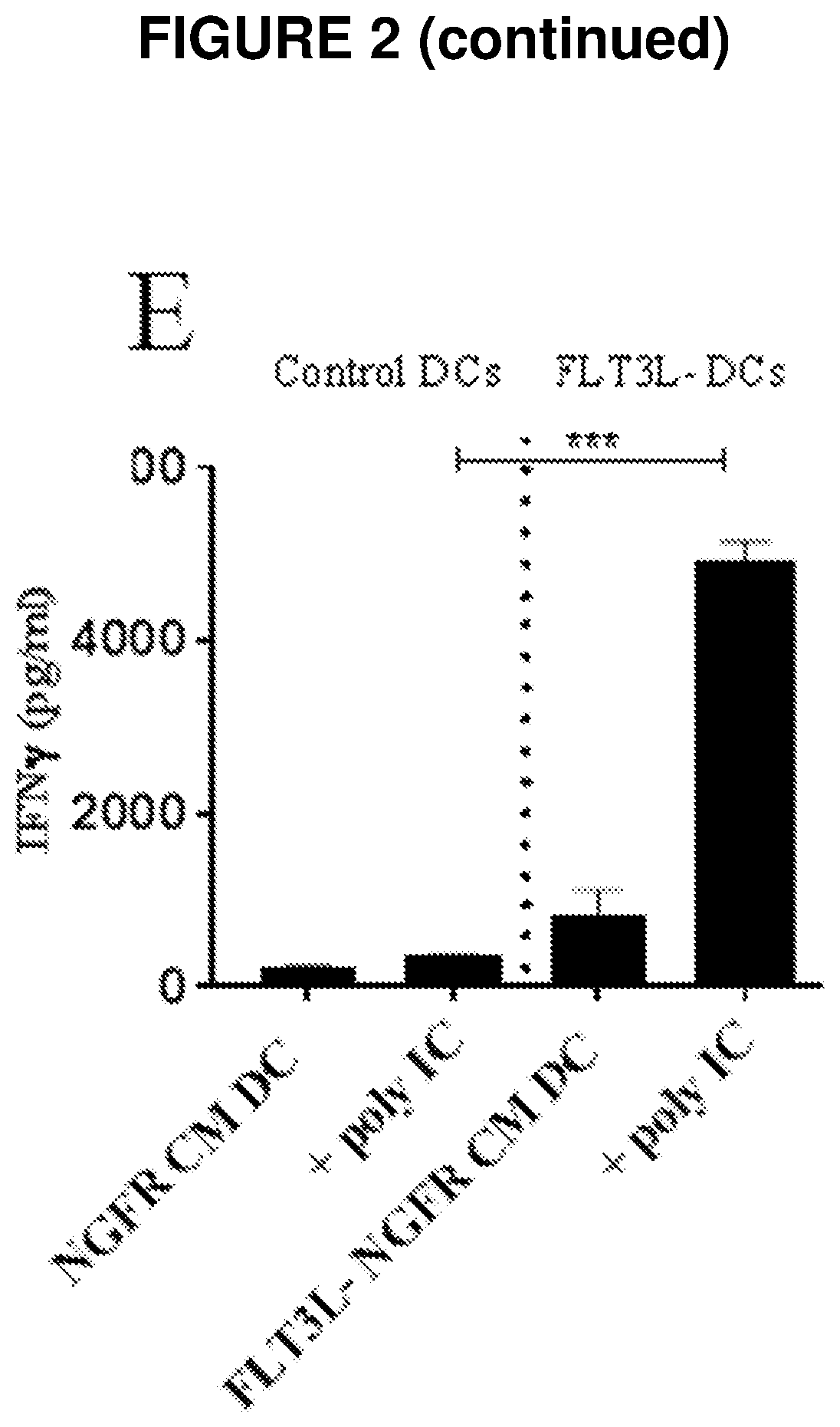Modified t cells and uses thereof
a technology of t cells and t cells, applied in the field of t cells, can solve the problems of limited success of solid tumours and inherent heterogeneity of t cells, and achieve the effect of enhancing anti-tumour t cell responses and promoting differentiation
- Summary
- Abstract
- Description
- Claims
- Application Information
AI Technical Summary
Benefits of technology
Problems solved by technology
Method used
Image
Examples
example 1
[0161]Anti-Her2 CAR T Cell Model
[0162]Primary murine splenocytes were transduced with a CAR containing the CD28 and TCR-ζ signaling domains recognizing the human Her2 antigen (scFv-CD28-ζ) as described in (Mardiana et al. 2017, Cancer Research, 77: 1296-1309; John et al. 2013, Clinical Cancer Research, 19: 5636-5646; Beavis et al. 2017, supra).
[0163]The syngeneic tumour lines 24JK-Her2 (a sarcoma cell line), E0771-Her2 (a triple negative breast cancer line) and MC38-Her2 (a colon carcinoma cell line) were engineered to express the human Her2 receptor. These lines are of C57 / BL6 origin, allowing them to be transplanted into C57 / BL6 hHer-2 transgenic mice. Using this model, the human Her2 receptor (minus intracellular signaling domains) is expressed under the control of the whey acidic protein promoter, resulting in expression in the cerebellum and breast tissues.
[0164]Anti-Her2 CAR T cells mediate potent anti-tumour efficacy against Her2+ tumour cells in vitro. In vivo treatment of m...
example 2
[0165]FLT3L-Generated CD103+ DCs Induce Superior T Cell Expansion In Vitro
[0166]T cells were transduced with a retroviral vector in which FLT3L was expressed along with truncated human nerve growth factor receptor (NGFR) as a marker gene to indicate the efficiency of transduction (FIG. 7A). GP+e86 viral-packaging lines were sorted by flow cytometry to generate FLT3L low (FLlo), intermediate (Flint) or high (FLhigh) expressing lines. Murine C57BL / 6 splenocytes were cultured in IL-2, IL-7 and activated using anti-CD3 and anti-CD28 antibodies before transduction to express NGFR FLlo, Flint or FLhigh. To verify that the transduced cells were expressing FLT3L at low, intermediate and high levels, supernatants were collected at 7 days post-transduction and the presence of FLT3L determined by ELISA (FIGS. 7B and 7C).
[0167]To investigate the potential of FLT3L-generated DCs to induce the enhanced proliferation of T cells, bone marrow derived DCs (BMDDCs) were generated in the presence of GM...
example 3
[0169]FLT3L Expressing CAR T Cells Induce the Differentiation of CD103+ DCs with Superior Antigen Presentation Function
[0170]Anti-Her2 CAR T cells were transduced with a retroviral vector in which FLT3L was expressed along with truncated human nerve growth factor receptor (NGFR) as a marker gene to indicate the efficiency of transduction. Dual transduction of murine T cells with the anti-Her2 CAR and the NGFR-FLT3L vector resulted in ˜40% NGFR+ cells. To verify that the transduced cells were expressing FLT3L, supernatants were collected at 7 days post transduction. Supernatants derived from NGFR-FLT3L CAR T cells contained high levels (˜60000 pg / ml) of FLT3L whereas supernatants from control CAR T cells did not contain detectable levels of FLT3L (FIG. 2A).
[0171]To investigate the potential of FLT3L expressing CAR T cells to induce the differentiation of CD103+ DCs, bone marrow derived DCs (BMDDCs) were generated in the presence of GMCSF and FLT3L in line with previously published pr...
PUM
| Property | Measurement | Unit |
|---|---|---|
| Composition | aaaaa | aaaaa |
Abstract
Description
Claims
Application Information
 Login to View More
Login to View More - R&D Engineer
- R&D Manager
- IP Professional
- Industry Leading Data Capabilities
- Powerful AI technology
- Patent DNA Extraction
Browse by: Latest US Patents, China's latest patents, Technical Efficacy Thesaurus, Application Domain, Technology Topic, Popular Technical Reports.
© 2024 PatSnap. All rights reserved.Legal|Privacy policy|Modern Slavery Act Transparency Statement|Sitemap|About US| Contact US: help@patsnap.com










